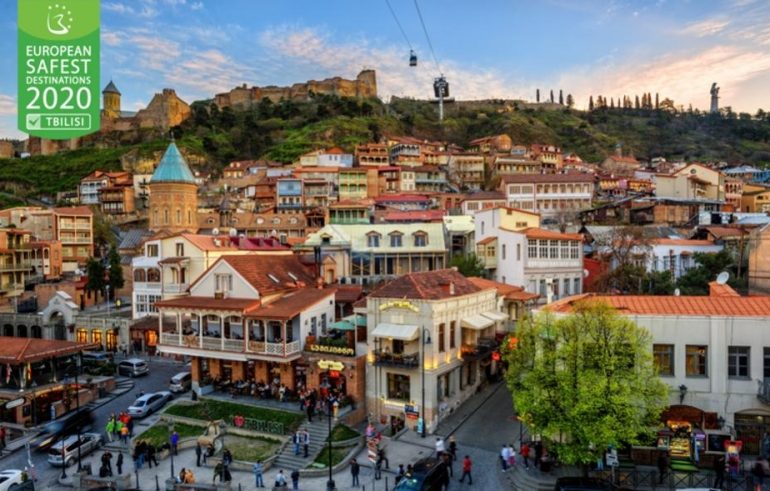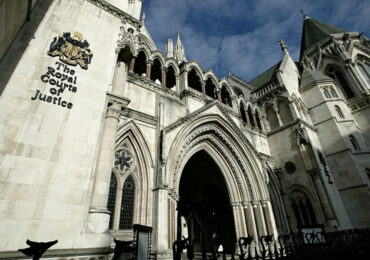With countries around Europe reducing coronavirus restrictions, opening borders and creating new ways to ensure safe travel for visitors, summer holidays to Europe are becoming a realistic possibility for relief-seeking travelers.
Along with creative concepts such as ‘air bridges,’ ‘travel bubbles’ and ‘holiday corridors’ between countries that have officially come out of the coronavirus crisis (and do not require quarantine for visitors), governments, international institutions and specialized tourism organizations are surging with new initiatives and protocols first to permit the resumption of cross-border vacation travel and then, in a few weeks, of international travel in time for the peak summer season.
Summer holidays to Europe could be back on next month via “air bridges,” reports The Sun.
“Many European countries are opening their borders and flights and hotels are also reopening now,” explains the European Best Destinations Organization (EBD) which falls under the European Commission’s EDEN Network (“European Destinations of Excellence”), working to promote sustainable tourism on the continent.
To help travelers who “after weeks of confinement want to travel to Europe but do not know where to travel and what safety measures are being taken in countries and regions,” EBD has unveiled a list of 20 destinations least affected by Covid-19 (defined as up to 600 times fewer Covid-19 cases).
These destinations benefit from proximity to hospitals and have a higher number of hospital beds per inhabitant than the majority of European countries, have implemented very specific protocols concerning hygiene in accommodations, restaurants and shops, and imposed measures such as the changing of air conditioning filters between each traveller stay, availability of masks and social distancing.
1. Tbilisi, Georgia
Tbilisi is the capital of Georgia, one of the world’s least affected by coronavirus countries. Georgia reacted very quickly with measures that kept the epidemic at an extremely low level. There are up to 260 times fewer cases of Covid-19 in Georgia than in the most-affected European countries.
The country is reopening its borders on July 1 and implementing health measures to protect travelers and its citizens for a safe and relaxing holiday.
Tbilisi is an open-minded destination, mixing past, present and future, culture and leisure. More trendy than ever, the city is an ideal destination for culture, gastronomy, diversity and architecture. “Wow” effect is guaranteed.
Magnificent Haussmannian buildings mingle with architecture dating from the Middle Ages, neo-classical, Soviet and extremely modern.
Georgia has more hospital beds per thousand inhabitants than Sweden and Denmark, and Tbilisi is up to five times safer (criminality rate) than Paris or London.
The city has a large offer of tourist apartments, much sought after by travelers now, as well as small, boutique hotels and guesthouses.
“Need an additional argument? A stay in a 5-star hotel or in a private villa in Tbilisi will cost you up to four times less than in the same hotel of the same group in another European capital,” informs EBD.
2. Corfu, Greece
“This paradisiacal Greek island is a perfect destination to recharge your batteries after this stressful period,” writes EBD.
Greece is one of the European countries least affected by coronavirus (up to 50 times fewer people infected than in the most affected European countries). The Greek healthcare system has never been overloaded during this health crisis. Moreover, the country has more hospital beds per capita than many European countries.
Corfu combines relaxation, sun and nature.
Reopening to travelers on July 1.
3. Cavtat, Croatia
Popular with celebrities, families, lovers and fans of gastronomy, culture, nature and water sports, Cavtat is the destination.
Croatia is among the European countries least affected by coronavirus with up to 20 times fewer infected people per million inhabitants than in other European countries.
Croatia is also one of the European countries with the highest number of hospital beds per inhabitant. The hospital in Dubrovnik is a 20-minute drive from Cavtat while the airport is only 10 minutes away.
Cavtat has a large selection of private villas, tourist apartments and small family hotels (selected as travelers’ favorites this summer). In addition, Croatia has implemented hygienic and sanitary measures in larger hotels.
Reopening to travelers on July 1. No quarantine requested.
4. Azores Islands
If Portugal was less affected by coronavirus, the Azores Islands — like Portugal’s Algarve region — were even further spared.
The Azores, in the middle of the Atlantic Ocean, is an archipelago of nine islands showing off nature in its purest state and one of the largest whale sanctuaries.
“A perfect destination if you need to reconnect with nature,” writes EBD. “If you like hiking, flora and fauna, dolphin- and whale-watching, tasting local products, living real experiences, the Azores are perfect for a holiday.”
The Azores have an ample offer of private villas, tourist apartments and small family hotels.
Reopening to travelers on July 1. No quarantine requested.
5. Preveza, Greece
Sun, countless beaches (including one of the longest in Europe), Mediterranean cuisine, a yacht-filled marina, Preveza appears fifth on the list of Europe’s safest vacation spots.
Situated at the mouth of the Ambracian Gulf, with the Ionian Sea at the other side, Preveza is “an island on the mainland” in Epiruswill, northwestern Greece.
Greece is one of the European countries least affected by coronavirus (up to 50 times fewer infected people than in the most affected European countries). Sanitary measures were taken early to welcome travelers to Preveza (four meters between beach umbrellas, air conditioning filters changed between each stay in hotel rooms that are constantly disinfected).
Preveza is surrounded by three hospitals (one of them at a university) and is located just 10 minutes by car from Aktion Airport. Greece has more hospital beds per capita than the United Kingdom or Canada.
Reopening to travelers from July 1. No quarantine requested.
6.Alentejo, Portugal
Portugal has been relatively spared from coronavirus with up to 40 times fewer people infected than anywhere else in Europe. Some regions such as the Alentejo have been almost ‘Covid-19 free’ so far with only one death linked to coronavirus.
The Alentejo, bordered by the Atlantic Ocean in southern Portugal and 1 1/2 hours by car from Lisbon, attracts travelers in search of simplicity in an unspoiled nature.
“Don’t miss a visit to Evora, share a wine tasting (they are among the most famous ones in Europe) and treat yourself to a road trip along the coast from Comporta to Odeceixe,” advises EBD.
Reopening to travelers on July 1. No quarantine requested.
7. Batumi, Adjara, Georgia
Georgia is by far one of the countries least affected by coronavirus. The country reacted very quickly with measures that kept the epidemic at an extremely low level. There are up to 260 times fewer cases of Covid-19 in Georgia than in the most-affected European countries.
Batumi, located on the coast of the Black Sea, at the foot of the Caucasus in southwestern Georgia, is the capital of the Autonomous Republic of Adjara and the second-largest city in the country.
Nicknamed “Las Vegas of the Black Sea,” Batumi, according to EBD “is a splendid mix of beautiful scenery, vibrant culture and legendary hospitality. This beautiful city invites you to experience the contrast of historic ancient sites as well as its modern lifestyle.”
Not only one of the safest destinations in Europe for coronavirus, Batumi is one of the most secure, with a crime rate up to five times lower than most European capitals.
“The Adjara region has breathtaking diversity: the sea with long beaches, high mountains, cultural monuments, monasteries, arch bridges, beautiful lakes and authentic villages. Here, you will taste local wines and undiscovered cuisine, feel the power of ecotourism, become a guest of open-hearted hosts. Their mountains, that stand close to the sky will make you feel in harmony with nature.
Batumi is also perfect in autumn: Temperatures in September and October are very pleasant.”
Batumi has more than 30 hospitals, including university hospitals, which have not been overcrowded since the start of the health crisis.
Reopening to travelers from July 1. No quarantine requested.
8. Zagreb, Croatia
Zagreb is among the favorite places to visit on EBD’s lists: a “travelers’ favorite destination” in Croatia, a “must-see destination for a city break,” the starting point for a road trip in Croatia, “a romantic destination” throughout the year, and a destination recognized for its Christmas market.
With a rich history dating from Roman times, it is the capital and the largest city in the country, located in the northwest along the Sava river, at the foot of the southern slopes of Medvednica Mountain.
Croatia has been rather spared from coronavirus, with up to 20 times fewer infected people than in any other European country. Well-equipped in healthcare, it also has more hospital beds per inhabitant than most European countries.
“Come enjoy its thousands of terraces in summer, read the newspaper or watch a football match (the Croats are passionate about football), visit its many beautiful parks, architectural wonders and historical monuments. It’s very Instagrammable, too,” says EBD.
Reopening to travelers on July 1. No quarantine requested.
9. Algarve, Portugal
Portugal is one of the countries least affected by coronavirus, with up to 40 times fewer infected people than the other European countries. Some regions have been almost entirely spared, including the Algarve and the Alentejo for example, and some of the most popular destinations for travelers, such as Lagos, have not recorded any coronavirus deaths.
The Algarve is the southernmost region of continental Portugal and particularly appreciated by families. Sandy long stretches of beaches framed by golden cliffs, small coves sheltered by the rocks, the ocean in every shade of blue and mostly calm and warm.
In the mountains, people maintain traditions they love to share and towns and cities each have their own special charm: Silves preserves traces of its Arab past; Lagos from the time of the discoveries; Tavira is a showcase for traditional architecture; and Faro, the gateway to the region, has a beautiful historic center.
Unlike other tourist destinations in Europe, 60% of Algarve tourist accommodations consist of private villas with swimming pools, apartments, guesthouses or small hotels. A “Safe and Clean” label to give travelers a guarantee of sanitary and cleanliness standards has been instituted by tourist officials for larger Portuguese hotels.
Portuguese officials reacted quickly and the country’s large clothing industry was able to produce masks early and even export them abroad. “With its hundreds of kilometers of beaches, Portugal is a perfect destination for the summer,” advises EBD.
Reopening to travellers July 1. No quarantine requested.
10. Sibiu, Romania
Sibiu is a beautiful, historical city in Transylvania, northwest of Bucharest, the capital of Romania.
Straddling the Cibin River and nicknamed The City with Eyes, Sibiu is a well-known tourist destination for both domestic and foreign visitors.
Known for its culture, history, gastronomy, diverse architecture (including its iconic houses with eyes that gave the city its nickname) and its natural wonders, the city has become a coveted tourist destination.
In 2004, the historical center became a UNESCO World Heritage Site. In 2007, it was designated the European Capital of Culture. A year later, it was ranked “Europe’s 8th-most idyllic place to live” by Forbes. In 2019, it was named the European Region of Gastronomy. And in 2020, it was designated “Europe’s sixth-best tourist destination” by EBD.
Sibiu has developed many green spaces in the city but also soft mobility, leisure spaces and parks, and is regarded as one of the Europe’s destinations with the best quality of life.
Along with other regions including Portugal’s Azores Islands, Sibiu follows strict policies to fight global warming and to protect the environment.
It’s also committed to sustainable tourism development based on respect for nature and human beings.
There were 15 times fewer Covid-19 cases in Romania than in the most affected European countries. Some destinations like Sibiu County have had no deaths linked to the pandemic.
Romania has more available hospital beds per inhabitant than Belgium, Switzerland or the Netherlands.
Reopening to travelers July 1. No quarantine requested.
11. Kotor, Montenegro
Secluded in the Gulf of Kotor, this coastal town in Montenegro is defined by EBD as “one of the most beautiful destinations in Europe for travelers in love, for foodies, for nature lovers and a haven of peace for nature, trekking, walking or cycling.”
The old Mediterranean port of Kotor is surrounded by fortifications built during the Venetian period in what’s considered one of the most indented parts of the Adriatic Sea. Some have called it the southernmost fjord in Europe, but it’s a submerged river canyon.
Together with the nearly overhanging limestone cliffs of Orjen and Lovćen, Kotor and its surrounding area form an impressive landscape.
Kotor has seen a recent increase in tourists attracted by the natural environment of the Gulf and by the old town. Kotor is part of the World Heritage Site dubbed the Natural and Culturo-Historical Region of Kotor and the fortified city is included in UNESCO’s World Heritage Site list as part of Venetian Works of Defense between the 15th and 17th centuries.
While there have been very few cases of coronavirus in Montenegro (60 times fewer than in the most-affected countries), Kotor has remained a green zone during the crisis with no case of coronavirus detected.
Montenegro has more available hospital beds per capita than Norway, Ireland and Canada.
Reopening to travelers July 1. No quarantine requested.
12. Rijeka, Croatia
The principal seaport and the third-largest city in Croatia after Zagreb and Split, it’s located in Primorje-Gorski Kotar County on Kvarner Bay, an inlet of the Adriatic Sea.
Historically, because of its strategic position and deep-water port, the city was fiercely contested, especially among Italy, Hungary and Croatia, changing hands many times over the centuries.
Selected as the European capital of culture and named among the Best European Destinations 2020 by EBD, Rijeka is a perfect destination for a safe European trip. It likely will be one of the top destinations this summer. “Croatians love the coffee terraces and the many beaches with crystal clear waters around Rijeka.”
Croatia has been spared the worst of the coronavirus, with up to 20 times fewer infected people than in any other European country. Well-equipped in healthcare, it also has more hospital beds per inhabitant than most European countries.
Reopening to travelers July 1. No quarantine requested.
13. Warsaw, Poland
“Warsaw is one of the most incredible cities in Europe,” writes EBD.
Its history is that of a people capable of facing any situation, of recovering and moving forward. Facing coronavirus, the Polish message has always been very clear: “Warsaw survived two world wars. We will get through this one, too. See you very soon !”
The capital and largest city of Poland, Warsaw is an alpha-global city, a major international tourist destination, a significant cultural, political and economic hub with a historical Old Town designated a UNESCO World Heritage Site.
“Warsaw is very rich and human, as are many Polish cities; its people show great respect for traditions but also for the youth, with trendy cafes and bars, open-air concerts in summer, ephemeral shops, incredible museums, an old town renovated after the Second World War and many places to discover for lovers of classical music and Chopin, in particular,” reads EBD’s recommendation.
Poland is one of the European countries least affected by coronavirus, along with Portugal and Greece. There are up to 20 times less contamination than in the most-affected countries of Western Europe. No hospital has ever been overwhelmed and Poland has more hospital beds per inhabitant than the Netherlands or Switzerland.
Reopening to travelers July 1. No quarantine requested.
14. Vienna, Austria
Vienna is visited by history buffs, lovers and families looking for a safe and peaceful destination throughout the year.
“Vienna is often selected for this reason, which is not only a feeling but a reality: The rate of criminal offenses is three times lower in this capital than in any other European capitals,” according to EBD.
With many parks and environmentally-friendly means of transport, Vienna is one of the cities with the best quality of life in Europe. It’s a good compromise for city breakers and nature lovers.
Austria has been less affected than other European countries, with up to 10 times fewer infected people.
You’d rather take your time and not hurry to book your holiday right now? No problem. Discover Vienna at Christmas: Its Christmas markets are ranked among the best Christmas markets in Europe.
Reopening to travelers from July 1. Before that date, a health certificate is required on entry, stating that the traveller is not infected.
15. Bohinj, Slovenia
Recognized by the European Commission as one of the best sustainable tourism destinations in Europe, Bohinj is a haven of peace for lovers of nature, outdoor sports, trekking, local products, crafts and real experiences.
Located in a basin in the Julian Alps in the Upper Carniola region of northwestern Slovenia, it’s known as one of the “green paradises of Europe” and the green lung of Slovenia (a highly nature-oriented country).
Slovenia has been little affected by coronavirus (10 times less contaminated than the most-affected countries) and it has more hospital beds per inhabitant than the majority of European countries.
Bohinj is only 40 minutes from Ljubljana’s airport and hospitals.
Reopening to travelers July 1. No quarantine requested.
16. Malta
Tourism on the island of Malta represents 15% of the nation’s gross domestic product.
In addition to the turquoise water of the Mediterranean Sea, Malta has a rich history and culture heritage.
“Discover the treasures and riches of one of the most beautiful destinations in Europe,” EBD writes. “Lay your beach towel on Riviera Bay Beach or on one of the many other beaches in Malta. If you really want to distance yourself from the crowd this summer you can also book your stay in Gozo. The island is smaller than the main island and ideal for nature lovers, hikers or scuba divers.”
There have been up to 55 times fewer cases of coronavirus in Malta than in the most-affected European countries. Malta has more hospital beds per resident than Finland, Ireland or the United Kingdom and its hospitals haven’t been overcrowded and can accommodate travelers, if necessary.
Hotels reopen on June 1, while the tourist season restarts on July 1st.
17. Gdansk, Poland
Poland is one of the most fashionable European countries and Gdansk, located on the southern edge of Gdańsk Bay on the Baltic Sea, is one its tourist pearls. This coastal city also bears the pretty nickname of “Pearl of the Baltic.”
With its 1,000-year-old historic district, the city is a rare beauty. Once you know this, all you have to do is ask yourself: “’Is it worth a city break?’ The answer is ‘yes!’” writes EBD.
Poland was 20 times less affected than other European countries, and has more hospital beds per inhabitant than the majority. Moreover, sanitary measures have been implemented to welcome travelers in hotels, restaurants and shops.
You can also visit Gdansk during the winter holidays: The Gdansk Christmas Market is ranked among the most beautiful Christmas markets in Europe.
Reopening to travelers July 1. No quarantine requested.
18. Vilnius, Lithuania
Located in southeastern Lithuania, Vilnius is the capital and the largest city in the country. The architecture of its Old Town is a UNESCO World Heritage Site.
Before World War II, Vilnius was one of the largest Jewish centers in Europe, which led to its nickname as “the Jerusalem of Lithuania.”
Vilnius is a perfect destination for families, lovers or solo travelers, according to EBD, which has found it to be “twice as safe as most European capitals.”
“Vilnius has many faces: It’s labyrinthine old town, its sleek business district, its elegant center, its many open squares and parks, its historic suburbs – all of which blend together in harmonious sense of unity – it just feels right whichever way you look at it.”
The renowned Old Town is nestled in a picturesque valley between the Vilnia and Neris rivers, next to the fort, which was guarded by Vilnius castle in the past.
Not daring to travel yet? Think about Vilnius at Christmas. Its Christmas market is one of the most beautiful in Europe and its Christmas tree is ranked first place of the most beautiful Christmas trees in Europe.
With 20 times fewer people infected by coronavirus than in the most-affected European countries, Lithuania also has a high average of hospital beds per inhabitant. (Only Germany and Austria do better in Europe).
Reopening to travelers July 1. No quarantine requested.
19. Riga, Latvia
The biggest metropolis in the Baltic, Riga blends timeless tradition and cutting-edge modernity. “A Nordic blonde with a fiery heart,” Riga has 800-years of turbulent history, from German knights to Swedish kings and Soviet commissars, who have left their footprints in the cultural heritage of the city.
Today, Latvia’s capital is an exciting European metropolis at the crossroads of eastern and northern Europe.
“With the Daugava River and the Gulf of Riga, the city has always lived in close cooperation with nature,” explains EBD. “Riga has many public parks, forests, squares, lakes, city canals, hills, islands and beaches.”
With 50 times fewer infected people than in some European countries, Latvia is one of the destinations least affected by this pandemic. Their hospitals have not been overwhelmed due to the coronavirus.
Reopening to travelers July 1. No quarantine requested.
20. Wild Taiga, Finland
The ultimate escape: In the heart of Finland’s eastern Kainuu nature reserve, Wild Taiga with its woods, untouched land, clear lakes and rapids is an invitation to authentic natural experiences and a rare opportunity to hike in unspoiled nature, watch and photograph wild life and enjoy cultural activities.
Wild Taiga, awarded the “EDEN” label by the European Commission, is the perfect destination for sustainable tourism. “There‘s so much to do: walking, canoeing, swimming in a lake, watching birds, flowers, but also bears in their natural environment. Wild Taiga is the best gift you can treat yourself and your children,” writes EBD.
With 15 times fewer Covid-19 cases than in some European countries, Finland is one of the destinations least affected by this pandemic.
Reopening to travelers July 1. No quarantine requested.
"Forbes Georgia-ის სარედაქციო ბლოგპოსტების სერია "როგორ გამდიდრდა“ და "საქართველო რეიტინგებში".















